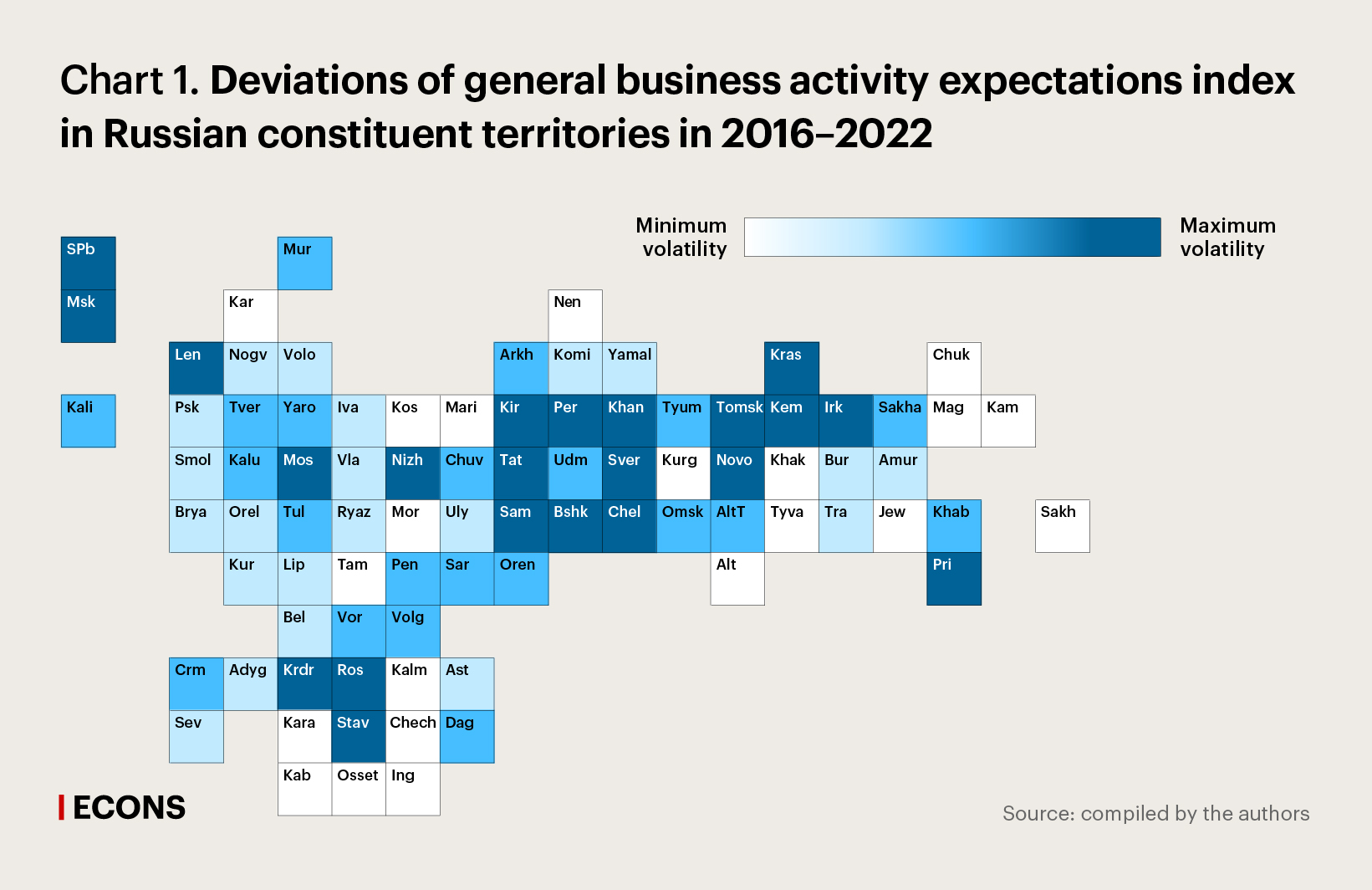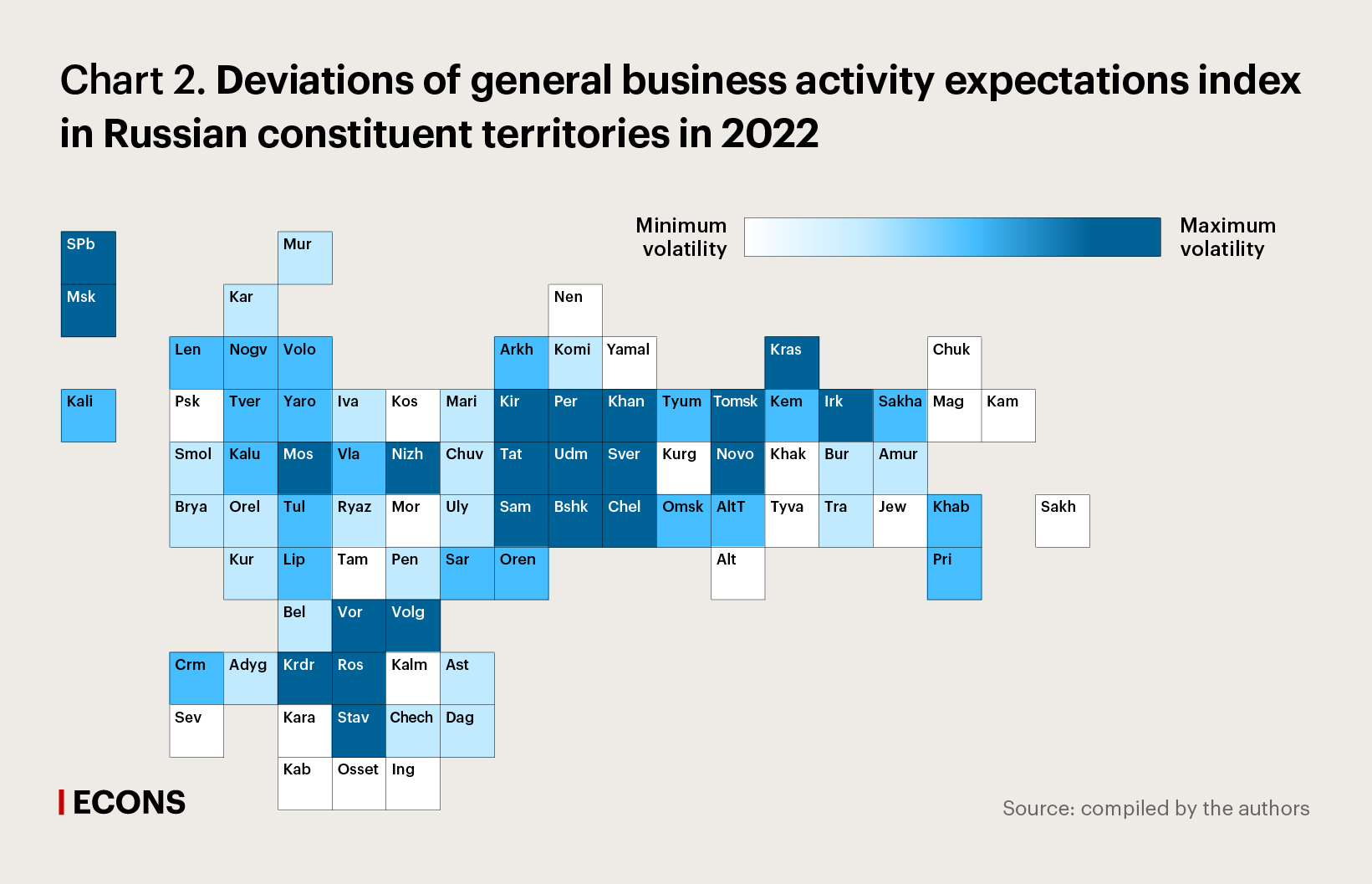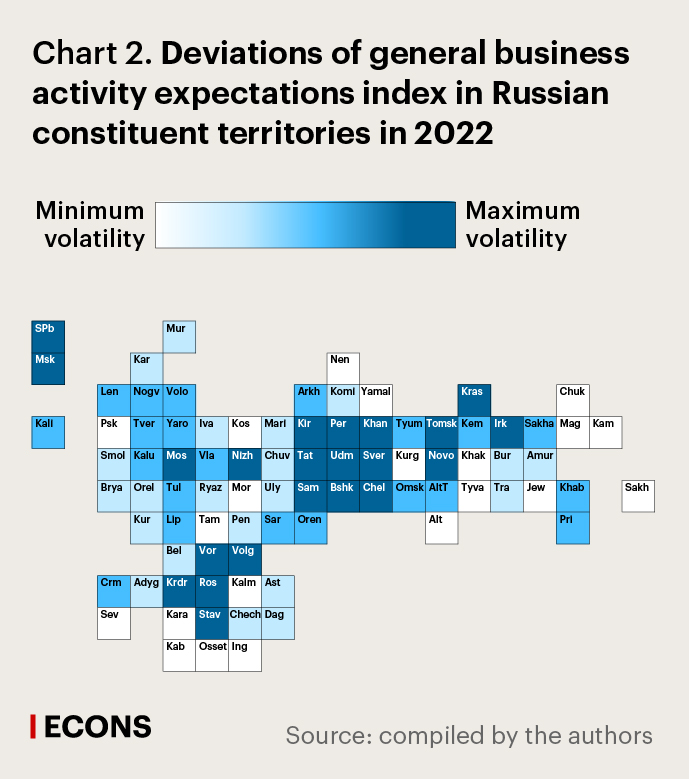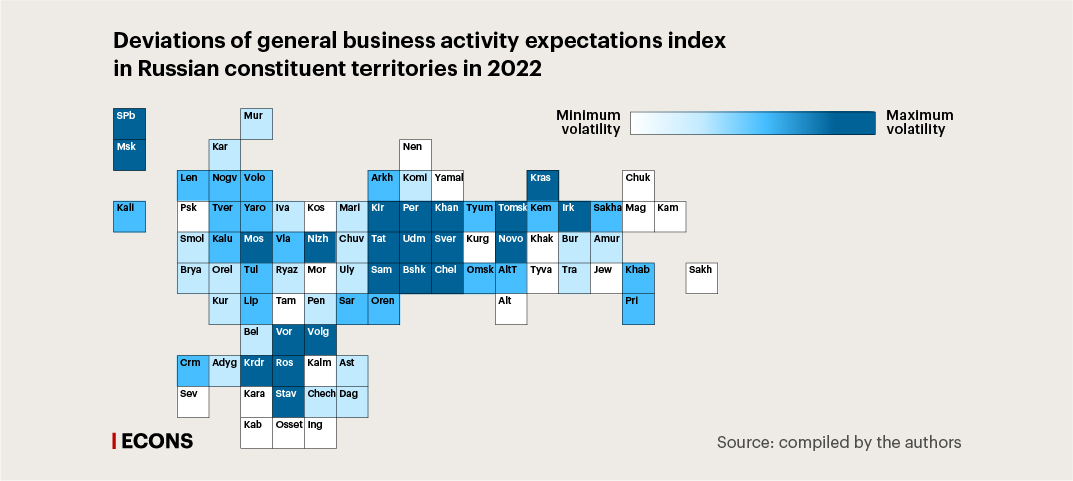Increasing uncertainty in the global economy, geopolitical conflicts, recession risks, and higher likelihood of new pandemics are all factors that evidence that the world will experience external shocks more frequently (link in Russian) in the coming decade. The ability to promptly detect changes in business activity can help governments rapidly assess the magnitude of the impact of such shocks on the economy and decide whether enterprises and households need support.
However, it may be fairly difficult to promptly measure business activity, especially if an economy is vast in geographical and economic terms: standard statistical methods are insufficient, and company surveys, for example, even if they are representative across sectors, may be unrepresentative across regions whose responses may differ substantially.
Over the past several years, the Russian economy has been exposed to significant external shocks twice (the pandemic shock of 2020 was followed by sanctions in 2022). To what extent did the pandemic and sanctions increase the uncertainty for domestic enterprises and households? Did responses differ across regions, and if they did, what were the factors behind this? Maxim Yurevich (Financial University under the Government of the Russian Federation), Nokolay Gorodniy (National Research University Higher School of Economics), and I have tried to answer these questions in our work.
Nowcasting of expectations
The first issue that researchers face in region-focused studies analysing the effect of shocks in Russia is the absence of regular and geographically detailed data on business activity dynamics. This is explicable: standard statistical methods fall behind significantly and large-scale regular surveys are too expensive.
To answer the questions raised and overcome the issue of the lack of data, we employed nowcasting, a method to measure business activity using big data analysis methods. Nowcasting is becoming increasingly popular (link in Russian) in foreign studies. It is a simple and convenient instrument that helps analyse and predict social and economic processes. For example, the frequency of search queries on the Internet using the words ‘hotels’ and ‘flights’ makes it possible to forecast tourist flows, and using the words ‘loss of job’ and ‘vacancies’ to predict the level of unemployment. Researchers analyse queries to assess the level of uncertainty and expectations of economic agents, among other things. Such methods became increasingly popular during the COVID-19 pandemic, when the methods of classical statistical assessment were too slow and quickly lost their applicability amid the rapidly changing situation with the spread of the virus.
For the nowcasting of business activity expectations, the key issue is the selection of words whose frequency in search queries helps assess the level of uncertainty and the expectations of households and businesses. To select such words, we analyzed an array of news items containing the words ‘expectations’ and ‘uncertainty’ on the RBC portal, which regularly covers a broad range of economic issues and has a large readership in Russian. We took into account the statistics of queries, which we identified based on words selected from RBC’s texts for 2013–2022 using data from Google Trends (link in Russian) by regions. We had to shorten the monitoring period to 2016–2022, since, in 2010–2016, Google Trends revised its system for collecting and calculating source data twice, including the principles of geographic positioning.
After processing the data concerning the query statistics, we constructed three indices reflecting the overall uncertainty in the economy, the uncertainty (and expectations) of businesses and, separately, the uncertainty (and expectations) of households.
Regional expectations indices
It appears that the indices we constructed reflect both positive and negative shocks in the Russian economy over the past years fairly well.
The most extensive negative shocks of business activity expectations are associated with the start of the special military operation, the outbreak of the coronavirus pandemic in Russia, and the introduction of sanctions in 2022. However, the expectation shocks are determined not by these events, but rather by the economic consequences arising in the country, that is, the shocks slightly lagged behind the trigger events.
The events of July 2018, when the 2018 FIFA World Cup in Russia coincided with an extensive staff reshuffle in the management of Russian ministries and regions, are an example of a positive shock.
In general, in the period between 2016 and 2022, the volatility of business activity expectations was higher in more developed regions (in terms of per capita GRP). In such regions, the share of the industrial sector is higher, more enterprises operate in external markets, and households earn more. Shocks are known to entail more uncertainty specifically for these categories of enterprises and households (Chart 1).
The econometric analysis confirmed the observations: all else being equal, and adjusting for the level of internet access, richer regions have higher index volatility on average, i.e., they express more concern.



We also note that developed regions were highly sensitive to external shocks based specifically on the data for 2022, when the surge in uncertainty was at a maximum over our sample period. The most concerned regions included financial and economic centres (Moscow and St Petersburg) and export-oriented regions supplying raw materials. In 2022, medium-income regions also demonstrated more volatile business activity expectations indices. This situation may have been caused by the fact that the sanctions against the Russian economy hit, first of all, specifically the financial centres and regions characterised by extensive involvement of foreign business as well as the regions exporting oil and gas. As a rule, business in such regions is more flexible and responds to external shocks more quickly and better adjusts to changing conditions (Chart 2).



Second, expectations of business activity in the given period were also the most volatile in the financial and economic centres of highly developed regions (Moscow and the Moscow Region and St Petersburg) and in developed regions with diversified economies. This may be due to the fact that the populations in these regions are more financially literate, participate more actively in the national agenda, and use various sources of information, including various online resourses. Moreover, the populations in relatively wealthier regions were more likely to suffer from the high volatility of the exchange rate in February 2022 as well as from the sanctions relating to restrictions on the circulation of foreign currency.
We have also found that greater Internet coverage fuels concern in a region. This result is also no surprise: the greater the share of the households with Internet access, the more sources of information are available in the region and the greater the concern in the case of certain events.
Third, business activity expectations in less developed agricultural regions (such as the Kabardino-Balkarian Republic, the Karachayevo-Circassian Republic, the Chechen Republic, the Republic of Altai, the Republic of Ingushetia, and the Republic of Kalmykia) and regions supplying raw materials (such as the Magadan Region and the Chukotka Autonomous Area) demonstrate low volatility in general. This is possibly due to the fact that, in less developed regions, business is less prepared for long-term existence and is likely to be focused on survival. Therefore, the effect of external shocks on overall sentiments is not very significant. This observation can be confirmed by the events of 2022, when the least developed regions still remained among the Russian constituent territories whose volatility was the least significant.
The indices constructed are fairly adequate both as instruments to reflect shocks in the country’s economic and political life and as predictors of possible changes in expectations. These results may help in the making of economic policy decisions and the study of the economy of regions as well as in forecasting their responses to shocks.
The full text of the study is published in the journal Voprosy Ekonomiki No.3, 2024.







